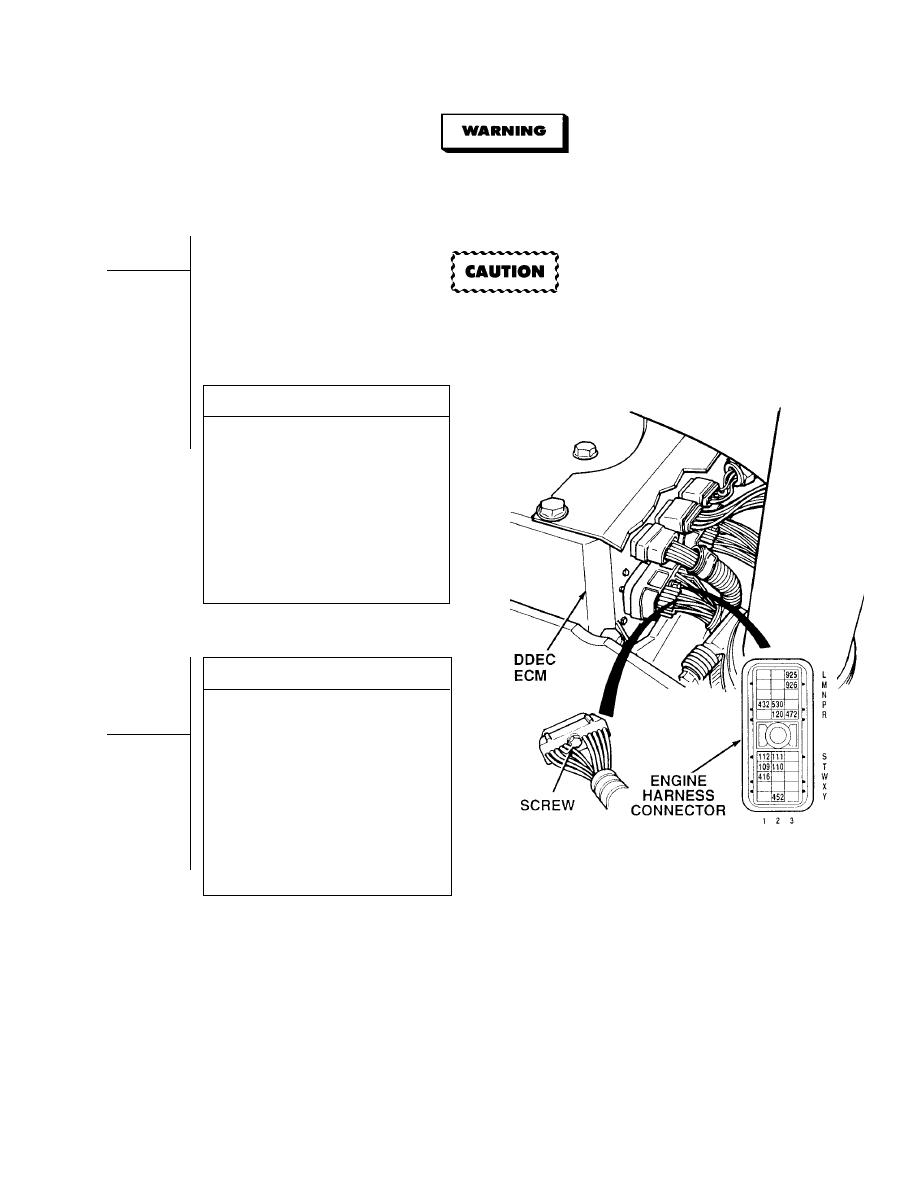 |
|||
|
|
|||
|
Page Title:
RESISTANCE TEST |
|
||
| ||||||||||
|
|
 TM 9-2320-364-20-1
Allow engine to cool before performing troubleshooting maintenance. If necessary use insulated pads
and gloves. Hot engine components will burn and cause injury to personnel.
Remove all jewelry such as rings, dog tags, bracelets, etc. If jewelry or tools contact positive electrical
circuits, a direct short may result. Damage to equipment, injury or death to personnel may occur.
Use jumperwire only between terminals indicated. Failure to comply may result in damage to DDEC
components or wiring.
DDEC ECM connector terminals are easily damaged. Use care when connecting and disconnecting
connectors.
RESISTANCE TEST
(1) Loosen screw and disconnect engine
harness connector at DDEC ECM.
(2) Are there 100 to 200 ohms present
between wires 112 and 111 at engine
harness connector, terminals S1
and S2?
(a) If there are less than 100 ohms
present, go to Step 4 of this Fault.
(b) If there are more than 200 ohms
present, go to Step 5 of this Fault.
(c) If there are between 100 and 200
ohms present, go to Step 3 of this
Fault.
VISUAL INSPECTION
(1) Check terminals at engine harness
connector (DDEC ECM and harness
side) for damage; bent, corroded and
unseated pins or terminals.
(a) If engine harness connector is
damaged, repair connector
(Para 7-101).
(b) If DDEC ECM connector
is damaged, replace DDEC ECM
(Para 7-56).
(c) If DDEC ECM connector and
engine harness connector are OK,
replace DDEC ECM (Para 7-56).
(2) Close top engine access cover.
|
|
Privacy Statement - Press Release - Copyright Information. - Contact Us |